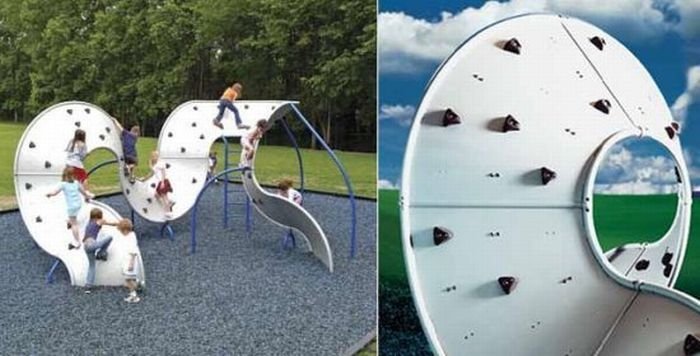|
|
Unusual Playgrounds For Children
|
Playgrounds in low-income areas have more maintenance-related hazards than playgrounds in high-income areas. For example, playgrounds in low-income areas had significantly more trash, rusty play equipment, and damaged fall surfaces.
• Unintended consequences
As a result of what some experts say is overprotectiveness driven by a fear of lawsuits, playgrounds have been designed to be, or at least to appear, excessively safe. This overprotectiveness may protect the playground owner from lawsuits, but it appears to result in a decreased sense of achievement and increased fears in children.
The equipment limitations result in the children receiving less value from the play time. The enclosed, padded, constrained, low structures prevent the child from taking risks and developing a sense of mastery over his or her environment. Successfully taking a risk is empowering to children. For example, a child climbing to the top of a tall jungle gym feels happy about successfully managing the challenging climb to the top, and he experiences the thrill of being in a precarious, high position. By contrast, the child on a low piece of equipment, designed to reduce the incidence of injuries from falls, experiences no such thrill, sense of mastery, or accomplishment. Additionally, a lack of experience with heights as a child is associated with increased acrophobia (fear of heights) in adults.
|
|









